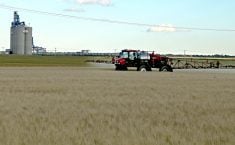Outbreaks of foot-and-mouth disease in Asia are prompting calls for continued vigilance in Canada.
The disease spread this summer from Southeast Asia, where it has been endemic, to China, South Korea and Japan, where it hadn’t been seen for 100 years.
The 2001 foot-and-mouth outbreak in Europe was preceded by outbreaks in Asia, according to a May 10 article inVeterinary Record.
Dr. Lyall Petrie of the Western College of Veterinary Medicine in Saskatoon said this suggests that heightened vigilance will be necessary if countries are to keep out the disease.
Read Also

New coal mine proposal met with old concerns
A smaller version of the previously rejected Grassy Mountain coal mine project in Crowsnest Pass is back on the table, and the Livingstone Landowners Group continues to voice concerns about the environmental risks.
Petrie, who observed the disease first-hand in the United Kingdom during the 2001 outbreak, said he was astounded by its rapid spread through northern England and southern Scotland.
He said a Canadian outbreak would be a nightmare scenario for veterinarians and producers.
The disease is easily misdiagnosed in sheep because lameness, one of the early symptoms, can be attributed to many other conditions. He also said the disease can spread rapidly in pig populations, calling the animals “little disease factories.”
Dr. Chris Clark of the WCVM said foot-and-mouth should not be viewed as the next impending disease outbreak for Canadian livestock.
Instead, he said producers should be vigilant and follow measures designed to keep Canada free of the disease.
Rob McNabb of the Canadian Cattlemen’s Association agreed that prevention is the most important measure for Canadian producers and felt Canada was well prepared to deal with an outbreak should it arise.
However, he said foot-and-mouth could potentially spread across North America within two weeks if it was to arrive here.
Petrie said biosecurity measures are an important prevention measure, ranging from keeping track of visitors and properly cleaning vehicles on farms to border controls of people who visit farms in countries where the disease is endemic.
The Canadian Food Inspection Agency is working with industry groups and veterinarians to devise a national set of biosecurity protocols for producers.
Petrie said the most likely cause of a Canadian outbreak would not be the actions of a producer but rather the illegal importation of an infected animal or meat product, which is what caused the country’s last outbreak in 1951.
















